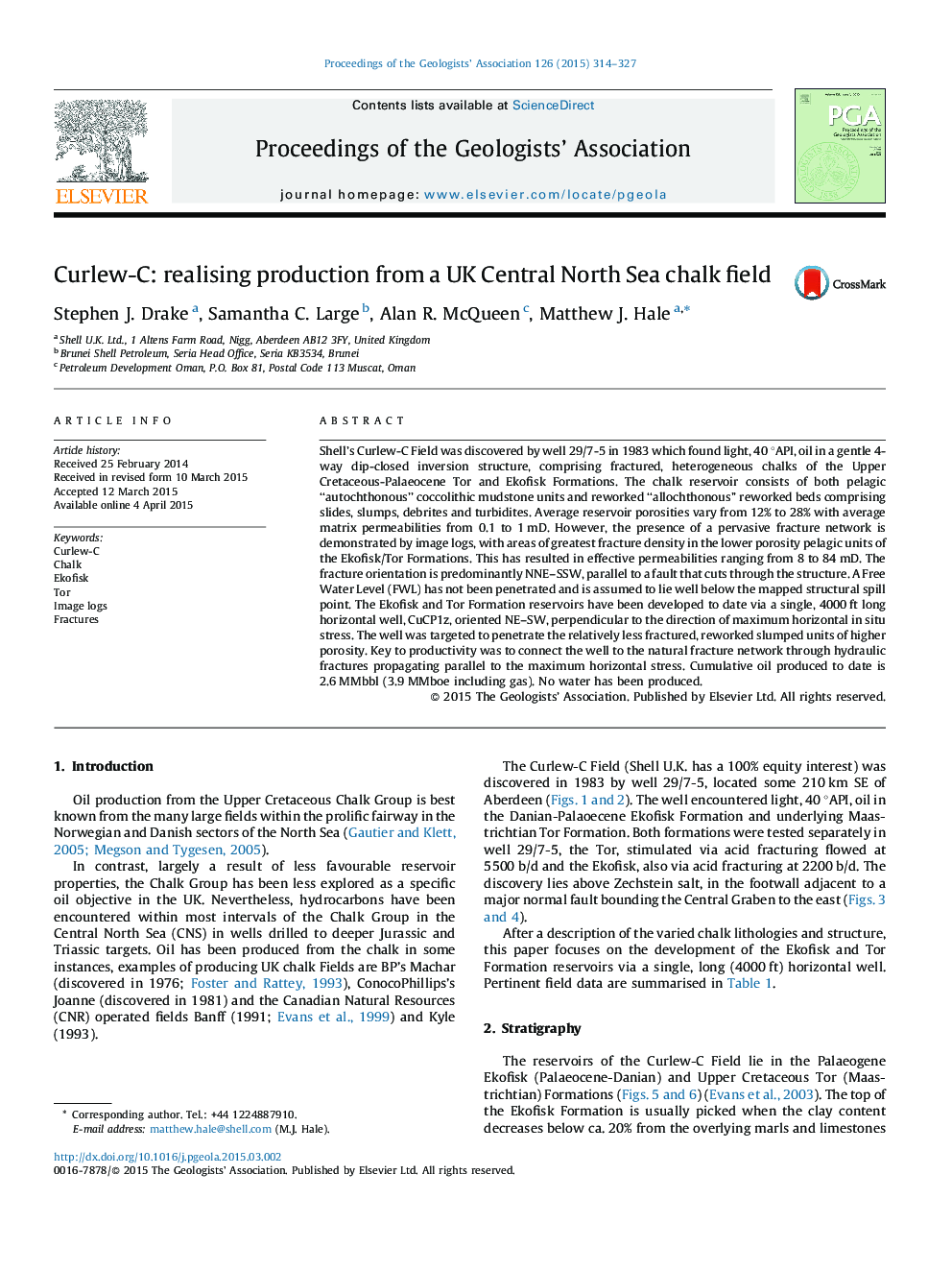| کد مقاله | کد نشریه | سال انتشار | مقاله انگلیسی | نسخه تمام متن |
|---|---|---|---|---|
| 4734657 | 1640648 | 2015 | 14 صفحه PDF | دانلود رایگان |

Shell's Curlew-C Field was discovered by well 29/7-5 in 1983 which found light, 40 °API, oil in a gentle 4-way dip-closed inversion structure, comprising fractured, heterogeneous chalks of the Upper Cretaceous-Palaeocene Tor and Ekofisk Formations. The chalk reservoir consists of both pelagic “autochthonous” coccolithic mudstone units and reworked “allochthonous” reworked beds comprising slides, slumps, debrites and turbidites. Average reservoir porosities vary from 12% to 28% with average matrix permeabilities from 0.1 to 1 mD. However, the presence of a pervasive fracture network is demonstrated by image logs, with areas of greatest fracture density in the lower porosity pelagic units of the Ekofisk/Tor Formations. This has resulted in effective permeabilities ranging from 8 to 84 mD. The fracture orientation is predominantly NNE–SSW, parallel to a fault that cuts through the structure. A Free Water Level (FWL) has not been penetrated and is assumed to lie well below the mapped structural spill point. The Ekofisk and Tor Formation reservoirs have been developed to date via a single, 4000 ft long horizontal well, CuCP1z, oriented NE–SW, perpendicular to the direction of maximum horizontal in situ stress. The well was targeted to penetrate the relatively less fractured, reworked slumped units of higher porosity. Key to productivity was to connect the well to the natural fracture network through hydraulic fractures propagating parallel to the maximum horizontal stress. Cumulative oil produced to date is 2.6 MMbbl (3.9 MMboe including gas). No water has been produced.
Journal: Proceedings of the Geologists' Association - Volume 126, Issue 3, June 2015, Pages 314–327